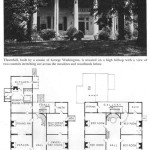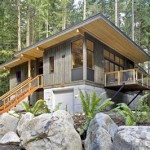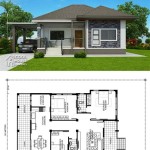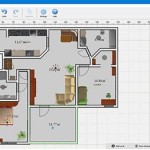A 3D house plan is a detailed visual representation of a home, created using 3D modeling software. It provides a comprehensive view of the home’s layout, space utilization, and architectural features. For instance, it accurately displays room dimensions, ceiling heights, and the positioning of windows, doors, and other structural elements.
3D house plans offer significant advantages in the planning and design process. They enable architects, builders, and homeowners to visualize the home from multiple perspectives and make informed decisions. By creating a virtual model of the home, they can experiment with different design options, materials, and layouts, ensuring that the final design meets the specific requirements and preferences of the homeowner.
In the following sections, we will explore the key benefits of 3D house plans, provide insights into the design process, and discuss the factors to consider when choosing a 3D modeling software.
3D house plans offer a wealth of benefits, making them an invaluable tool for architects, builders, and homeowners alike.
- Enhanced visualization
- Accurate space planning
- Efficient design exploration
- Improved communication
- Clash detection
- Cost estimation
- Marketing advantage
- Sustainable design
- Remodeling and renovation
By leveraging the capabilities of 3D modeling software, these plans provide a comprehensive and interactive representation of the home, empowering stakeholders to make informed decisions and create exceptional living spaces.
Enhanced visualization
3D house plans provide an unparalleled level of visualization, allowing architects, builders, and homeowners to view the home from any angle and perspective.
- Realistic walkthroughs:
3D plans enable users to virtually walk through the home, experiencing the space and layout firsthand. This immersive experience helps identify potential issues, optimize space utilization, and make informed design decisions.
- Multiple perspectives:
Unlike traditional 2D plans, 3D models allow users to view the home from above, below, and all sides. This comprehensive visualization helps identify potential problems, such as clashes between structural elements or insufficient natural light.
- Detailed interior and exterior views:
3D plans provide detailed views of both the interior and exterior of the home. Users can visualize the placement of furniture, fixtures, and finishes, as well as the overall architectural style and curb appeal.
- Interactive exploration:
3D models are interactive, allowing users to rotate, zoom, and pan through the home. This interactive exploration enables a deeper understanding of the space and its functionality.
The enhanced visualization capabilities of 3D house plans empower stakeholders to make well-informed decisions, identify potential issues early on, and create homes that meet their specific needs and preferences.
Accurate space planning
3D house plans enable accurate space planning, ensuring that the home is designed to meet the specific needs and requirements of the occupants.
- Precise room dimensions:
3D plans provide precise measurements and dimensions of each room, allowing architects and builders to optimize space utilization and ensure that furniture, fixtures, and appliances fit comfortably within the designated areas.
- Efficient layout design:
3D models facilitate the exploration of different layout options, enabling stakeholders to identify the most efficient and functional arrangement of rooms, hallways, and other spaces. This optimization process helps create a home that flows seamlessly and meets the specific needs of the occupants.
- Ergonomic considerations:
3D plans allow designers to assess the ergonomics of the home, ensuring that spaces are comfortable and accessible for all users. They can analyze factors such as clearances, reach distances, and sightlines to create a home that is both functional and user-friendly.
- Compliance with building codes:
3D plans can be used to verify compliance with building codes and regulations. By accurately representing the dimensions and layout of the home, 3D models help ensure that the design meets the minimum requirements set forth by local authorities.
The accurate space planning capabilities of 3D house plans ensure that the home is designed to be functional, comfortable, and code-compliant, creating a living space that meets the specific needs and preferences of the occupants.
Efficient design exploration
3D house plans facilitate efficient design exploration, empowering architects, builders, and homeowners to experiment with different design options and make informed decisions.
- Multiple design iterations:
3D models allow for quick and easy design iterations. Users can modify the layout, materials, and finishes in real-time, visualizing the changes instantly. This iterative process enables stakeholders to explore numerous design options and refine the home’s design until it meets their specific preferences and requirements.
- Material and finish visualization:
3D plans provide realistic visualizations of different materials and finishes, allowing users to experiment with various combinations and assess their aesthetic impact. This visual representation helps homeowners make informed choices about the materials and finishes that best suit their taste and budget.
- Furniture and fixture placement:
3D models enable users to virtually place furniture and fixtures within the home, visualizing the space and functionality of each room. This interactive exploration helps identify potential space constraints, optimize furniture arrangements, and create a home that is both comfortable and stylish.
- Lighting and natural daylight analysis:
3D plans can be used to analyze the lighting conditions within the home, both natural and artificial. By simulating different lighting scenarios, architects and designers can optimize window placement, skylight installation, and artificial lighting fixtures to create well-lit and energy-efficient spaces.
The efficient design exploration capabilities of 3D house plans empower stakeholders to experiment with various design options, make informed decisions, and create homes that are both functional and aesthetically pleasing.
Improved communication
3D house plans significantly improve communication among architects, builders, homeowners, and other stakeholders involved in the design and construction process.
- Clear and unambiguous visualization:
3D plans provide a clear and unambiguous representation of the home’s design, eliminating the potential for misinterpretations or misunderstandings that can arise from traditional 2D plans. The realistic visualizations enable all stakeholders to have a shared understanding of the project’s scope and details.
- Reduced need for physical models:
3D plans reduce the need for physical models, which can be time-consuming and expensive to create. With 3D models, stakeholders can easily visualize the home’s design and make informed decisions without the need for physical representations.
- Improved collaboration:
3D plans facilitate improved collaboration among stakeholders. They provide a common platform for sharing ideas, discussing design options, and resolving potential conflicts. The interactive nature of 3D models allows for real-time collaboration and feedback, streamlining the design process.
- Enhanced client engagement:
3D plans enhance client engagement by providing homeowners with a realistic and immersive experience of their future home. They can interact with the model, explore different design options, and provide feedback, ensuring that the final design aligns with their vision and preferences.
The improved communication capabilities of 3D house plans streamline the design and construction process, reduce misunderstandings, and foster collaboration among stakeholders, ultimately leading to a more efficient and successful project.
Clash detection
Clash detection is a crucial aspect of the design process that identifies potential conflicts between different building elements, such as structural components, MEP systems, and architectural features. 3D house plans play a vital role in clash detection, enabling architects, engineers, and contractors to identify and resolve these conflicts early on, avoiding costly rework and delays during construction.
- Comprehensive analysis:
3D models provide a comprehensive representation of the entire building, including all structural elements, MEP systems, and architectural features. This comprehensive view enables a thorough analysis of potential clashes between different building components, ensuring that the design is coordinated and conflict-free.
- Early identification:
By conducting clash detection during the design phase, potential conflicts can be identified early on, before construction begins. This early identification allows architects and engineers to make necessary adjustments to the design, reducing the risk of costly rework and delays later in the project.
- Improved coordination:
3D house plans facilitate improved coordination among different disciplines involved in the design process. By sharing the 3D model with structural engineers, MEP engineers, and architects, potential clashes can be identified and resolved collaboratively, ensuring that all building components are properly coordinated.
- Reduced construction errors:
Thorough clash detection during the design phase helps reduce the likelihood of construction errors. By identifying and resolving potential conflicts upfront, the construction process becomes more efficient, reducing the risk of costly mistakes and delays on-site.
The clash detection capabilities of 3D house plans enhance the design process by identifying potential conflicts early on, facilitating better coordination among stakeholders, and reducing the risk of construction errors. This leads to a more efficient and successful project.
Cost estimation
3D house plans provide valuable assistance in cost estimation, enabling architects, builders, and homeowners to accurately calculate the potential costs associated with the construction of the home.
- Material quantification:
3D models provide accurate measurements and quantities of all building materials required for construction, including lumber, concrete, roofing, and finishes. This detailed quantification helps contractors and estimators determine the exact amount of materials needed, reducing waste and optimizing material procurement.
- Labor cost estimation:
3D plans facilitate labor cost estimation by providing a clear understanding of the construction process and the tasks involved. By analyzing the model, contractors can estimate the time and effort required for each construction phase, enabling them to accurately calculate labor costs.
- Accurate pricing:
With precise material quantities and labor cost estimates, 3D house plans enable contractors to provide more accurate pricing for construction projects. This accuracy helps homeowners make informed decisions and avoid unexpected cost overruns during the construction phase.
- Value engineering:
3D models allow architects and engineers to explore different design options and materials during the planning stage. By visualizing the impact of these changes on the overall cost, they can identify opportunities for value engineering, optimizing the design to reduce construction costs while maintaining quality.
The cost estimation capabilities of 3D house plans provide valuable insights into the financial aspects of the project, helping stakeholders make informed decisions, optimize material procurement, and accurately estimate construction costs.
Marketing advantage
3D house plans offer a significant marketing advantage, particularly for architects, builders, and real estate professionals looking to showcase their projects.
- Enhanced property visualization:
3D house plans provide potential buyers and clients with a realistic and immersive experience of the property. They can virtually walk through the home, explore different rooms, and visualize the space and layout, creating a strong emotional connection to the property.
- Interactive marketing materials:
3D plans can be easily integrated into marketing materials such as brochures, websites, and social media campaigns. Interactive 3D models allow potential buyers to engage with the property on a deeper level, increasing interest and driving conversions.
- Competitive differentiation:
By offering 3D house plans, architects and builders can differentiate themselves from competitors and demonstrate their commitment to innovation and customer satisfaction. Showcasing 3D models adds value to the marketing efforts and sets the property apart in the market.
- Increased sales and rentals:
3D house plans have been shown to increase sales and rentals by providing potential buyers and tenants with a clear understanding of the property’s features and benefits. The immersive experience and interactive nature of 3D models help build trust and confidence, leading to faster decision-making and higher conversion rates.
The marketing advantages of 3D house plans are undeniable, providing a powerful tool for architects, builders, and real estate professionals to showcase their projects, engage potential clients, and drive sales and rentals.
Sustainable design
3D house plans play a crucial role in promoting sustainable design practices, enabling architects, builders, and homeowners to design homes that minimize environmental impact and maximize energy efficiency.
- Energy efficiency analysis:
3D models allow architects and engineers to conduct energy efficiency analysis during the design phase. By simulating different building materials, insulation systems, and window placements, they can optimize the home’s energy performance, reducing heating and cooling costs and creating a more sustainable living environment.
- Natural daylight optimization:
3D plans enable the analysis of natural daylighting within the home. Architects can simulate different window configurations and orientations to maximize natural light penetration, reducing the need for artificial lighting and creating a healthier and more comfortable indoor environment.
- Passive design strategies:
3D models facilitate the implementation of passive design strategies, such as solar orientation, thermal mass, and natural ventilation. By visualizing the home’s response to different environmental conditions, architects can design homes that passively regulate temperature and reduce energy consumption.
- Material selection and optimization:
3D plans allow architects and builders to explore different building materials and assess their environmental impact. By selecting sustainable materials with low embodied energy and high durability, they can reduce the home’s carbon footprint and promote a circular economy.
The sustainable design capabilities of 3D house plans empower stakeholders to create homes that are not only aesthetically pleasing but also environmentally responsible, contributing to a more sustainable built environment.
Remodeling and renovation
3D house plans are invaluable tools for remodeling and renovation projects, enabling homeowners, architects, and contractors to visualize and plan changes to existing structures.
With 3D models, homeowners can explore different design options, materials, and layouts for their remodeled spaces. They can virtually walk through the home, assess the impact of changes, and make informed decisions before any physical work begins. This interactive exploration minimizes the risk of costly mistakes and ensures that the renovation aligns with their vision and preferences.
For architects and contractors, 3D house plans facilitate accurate planning and coordination. They can use the models to assess the feasibility of proposed changes, identify potential structural issues, and plan for efficient execution. By simulating different scenarios in the virtual environment, they can optimize the design and minimize disruptions during the renovation process.
3D models also play a crucial role in communicating design ideas and changes to clients and stakeholders. Realistic visualizations and interactive walkthroughs help convey complex concepts clearly, reducing misunderstandings and ensuring that everyone is on the same page throughout the remodeling or renovation project.
Overall, 3D house plans empower homeowners, architects, and contractors to approach remodeling and renovation projects with greater confidence, precision, and efficiency. By providing a virtual representation of the existing structure and proposed changes, they minimize risks, facilitate informed decision-making, and ultimately lead to more successful outcomes.










Related Posts








